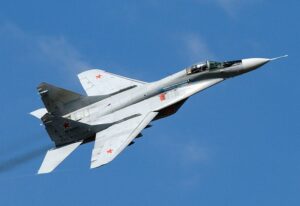
Ukraine’s Air Force Today: All Aircraft + Details
Ukraine’s inventory includes a mix of legacy platforms like the MiG-29, Su-27, Su-24, and Su-25, alongside newly acquired Western aircraft.
Welcome to Aircraft & Warplanes! On this website, you will find information on various airplanes, airships, gliders, helicopters, hot air balloons, and paramotors from all around the world. This is an educational site – forever free. Click on the categories below to start exploring.
Explore by Time Period: Antiquity and Pre-WW1 – The Great War – Interwar Period – World War II – Post-WW2
Explore by Type: Airships – Gliders – Helicopters – Hot Air Balloons – Air Superiority – Airliners – Biplanes – Bombers – Coastal Patrol – Fighters – General Purpose – Ground Attack – Interceptors – Monoplanes – Prototypes and Experiments – Reconnaissance and Surveillance – Scouts – Sports / Racers – Stealth Attack – Trainers – Transporters – Unmanned Vehicles
Explore by Country: United Kingdom – United States – Japan – France – Germany – OTHERS
Explore articles and stories about aircraft and warplanes from WW1, WW2, and more. From iconic manufacturers and legendary aviators to groundbreaking designs and the latest advancements in aerospace, this compilation offers a panoramic view of the rich tapestry of flight.

Ukraine’s inventory includes a mix of legacy platforms like the MiG-29, Su-27, Su-24, and Su-25, alongside newly acquired Western aircraft.

The weirdest-looking planes ever built, ranked for their odd designs, ambitious concepts, and sometimes just plain bizarre appearances.

A list of the most important milestones in the history of hot air balloons, showcasing their development and contributions.

Texas, with its vast skies and rich military heritage, has produced some of the most legendary fighter aces in American history.

All about the Pugachev’s Cobra, an advanced aerobatic maneuver that highlights the exceptional agility and performance of fighter jets.
Aircraft manufacturers are the backbone of the aviation industry, responsible for designing, producing, and testing a wide range of aircraft, from small private planes to large commercial airliners and military jets. Major manufacturers like Boeing, Airbus, Lockheed Martin, and Embraer have shaped the evolution of flight, driving technological advancements in aerodynamics, materials, and propulsion systems. Explore more below.
Early aircraft were the first flying machines to achieve sustained and controlled flight. They were designed and built in the late 19th and early 20th centuries, and marked the beginning of human aviation. The first successful flight of a powered, heavier-than-air aircraft was achieved by the Wright brothers in 1903, but there were many earlier attempts to achieve flight.

The Deperdussin TT was a French monoplane introduced in 1912 and widely used by the French Air Force during World War I.
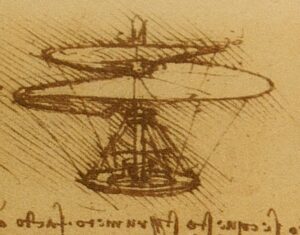
Leonardo’s Aerial Screw was envisioned as a device resembling a large screw or corkscrew-shaped structure that would enable vertical flight.

The Morane-Saulnier G was a French two-seat racing monoplane produced before the First World War and used for sports and racing.
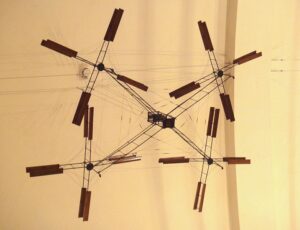
Leonardo’s Aerial Screw was envisioned as a device resembling a large screw or corkscrew-shaped structure that would enable vertical flight.

The Morane-Saulnier H was a French single-seat successful sporting and racing aircraft. It was the derivative of the Morane-Saulnier G.
The Great War, or WW1, was the first major conflict that involved the use of aircraft. Although airplanes made an appearance at the outset of the conflict, zeppelins and balloons were widely adopted for reconnaissance and artillery spotting, as well as a few bombing raids over the Eastern front and Great Britain. During the First World War, engineers developed many specialized types of aircraft, such as bombers, fighters, and trench strafers.
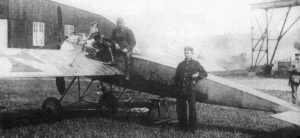
The Fokker E.I was the first fighter aircraft that entered service with the Fliegertruppe of the Deutsches Heer during the Great War WW1.
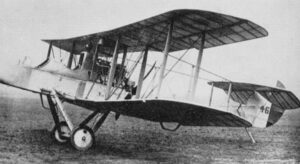
The Airco DH.1 is a single-seat biplane fighter aircraft and one of the most important aircraft designers of the 20th century.

The Nieuport 27 was a French sesquiplane fighter aircraft designed by the Nieuport company and used during World War I.

The Siemens-Schuckert D.IV (SSW) was a German aircraft used during World WEar I (although it entered the conflict rather late)
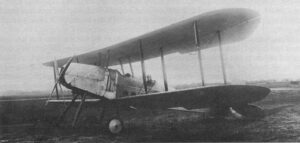
The Royal Aircraft Factory R.E.5 was a British two-seat reconnaissance and artillery observation biplane used during World War I.

The Zeppelin-Staaken Riesenflugzeuge was a group of large German bomber aircraft powered by four or more engines and built from 1915 to 1919.

The Martinsyde G.100 (and G.102) was a British fighter bomber aircraft built by Martinsyde and used during World War I.

The Nieuport II was a French mid-wing monoplane used for training, sporting and racing. It was noted for its high performance.

The Morane-Saulnier L (Type L or MoS-3) was a French parasol wing one or two-seat scout aeroplane using during the First World War.

The Short Type 827 (Short Admiralty Type 827) was a British two-seat reconnaissance floatplane manufactured by Short Brothers during WW1.
During World War II, or WW2, aviation became a key component of modern warfare. Both power and speed increased significantly, with fleets improving drastically during the development of the conflict. There were three main types of aircraft used during WW2: Fighters (to shoot down enemy aircraft), bombers (to drop them on targets), and transport planes (to move troops and supplies).

The Grumman F4F Wildcat is an American fighter aircraft used by the United States Navy and the British Royal Navy during WW2.

The Focke-Achgelis Fa 223 was a helicopter developed by Germany during World War II and the first one to attain production status.

The Messerschmitt Me 209 was a German single-engine racing aircraft designed to break speed records and used as a propaganda tool in WW2.

The Mitsubishi A7M “Reppū” was a Japanese carrier-based fighter aircraft designed as the successor to the Imperial Japanese Navy’s A6M Zero.

The Mitsubishi G4M “Betty” was a twin-engine medium bomber referred to by Navy pilots as Hamaki due to its cylindrical shape.

The Henschel Hs 123 was a single-seat biplane dive bomber and close-support aircraft flown by the Luftwaffe during the Spanish Civil War WW2.

The Blohm & Voss BV 138 Seedrache was a trimotor flying boat used by the Luftwaffe for seaborne maritime patrol and naval reconnaissance.

The Boeing P-26 Peashooter was the first all-metal American fighter aircraft and the first pursuit monoplane to join the Army Air Cops.

The Douglas A-20 Havoc is an American light bomber, night intruder, attack aircraft, and World War II reconnaissance aircraft.

The Arsenal VG-33 was a fast French light fighter aircraft that was under development at the start of World War II.